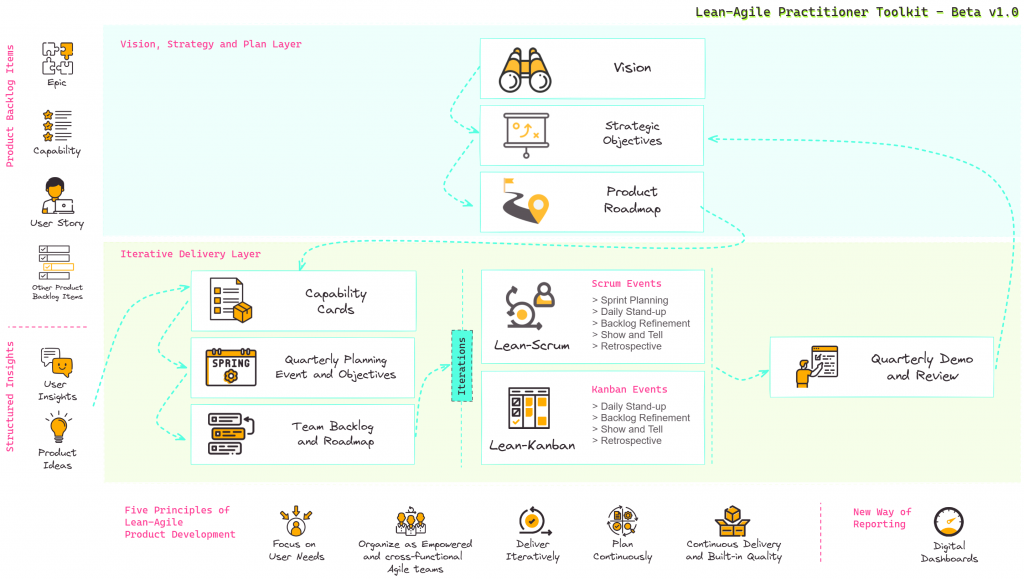User Research
In today’s digital product development landscape, user research has become an organic part of many product teams. Teams need user research for two main purposes
- Discovery: A wide range of discovery activities help teams and product leaders understand their users/customers and their needs better. In Lean-Scrum and Lean-Kanban, user research in the discovery space is mostly managed through time-boxed capabilities and/or enablers with pre-defined expected outputs or outcomes. These activities ultimately feed into strategic objectives and capabilities delivered as part of the product or service.
- Verification: This set of activities is more defined than those in the discovery space. It could involve testing a hypothesis via prototypes or verifying functionalities and flows already developed on the product. Verifying hypotheses should quickly help the team identify the right user stories. Similarly, identifying pain points, problems, and opportunities for improvement on the current software is crucial for providing a better user experience and engagement. A quick feedback loop is essential for this type of user research activity.
User researchers use a variety of tools and techniques to gather and document user feedback and needs. They then share their findings with the team and stakeholders through dedicated sessions. In Lean-Scrum, user research is seen as an organic part of team activities. We encourage teams to participate in user research sessions. Additionally, user research should be integrated into Scrum events.
User Insights
User research ultimately informs the team’s actions, whether developing a new capability or improving how the product or service works. However, if regular user research activities occur without the product backlog reflecting their outcomes, there’s a disconnect in the process of transforming valuable information into product capabilities. Structuring information and identifying a regular mechanism to assess it can help address this issue. In fact, structuring information in a way that allows for regular assessment and tracking can be as important, if not more important, than having the information itself.
The Lean-Agile guideline urges agile practitioners to put user insights on their collaboration space in a format that allows each identified user need to be tracked and assessed regularly. We also recommend that Product Managers/Product Owners regularly review the list to prioritize and decide next actions for each item, such as adding it to sprint or team backlogs, capability cards for the next quarter, further investigation before taking action or even discarding them with a reason. Assigning a relative User Value would help for the prioritization. This list also provides visibility and transparency to the team and stakeholders about how user research findings are processed.
Example (headlines for the list):
User Need
Status
Capability/User Story(s)
User Value
Notes
These headlines of the list is indicative.


